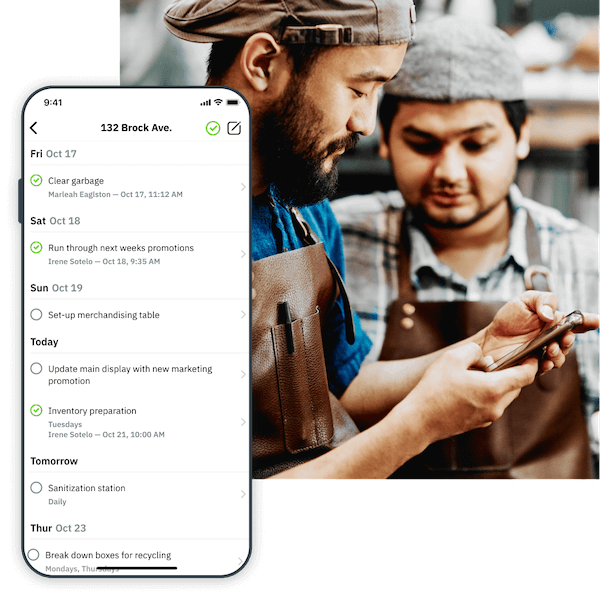
4 ways retailers can prioritize empowering staff through effective task management
Against a backdrop of economic uncertainty and related disruptions, consumer preferences and behaviour are shifting, resulting in evolved and increased expectations concerning the experience they receive from brands. As a result, the role of the retail employee is also transforming, with a greater emphasis being placed on the need for knowledgeable talent that can help support the experience offered and overall retail execution.
However, in order to get the most out of today’s employees, says Suzanne Sears, retail staffing expert and president of Best Retail Careers International Inc., brands need to focus not just on sourcing new staff, but also on empowering staff already on the floor.
“Retailers throughout the entire industry are struggling to find the talent that’s required to deliver on the expectations of today’s consumer,” she says. “But there are quite a few brands out there that are not doing a whole lot to empower the talent that they do have within their organizations. And, it often boils down to ineffective communication between head office, store managers and their frontline employees. If an employee doesn’t understand what’s expected of them in order to achieve the team’s objectives, if they don’t have clear visibility into the value of their contribution and the contributions of those around them, they aren’t going to feel empowered enough to go above and beyond for their colleagues, the consumer or the brand when the opportunity arises.”
In fact, the lack of effective communication within retail organizations is so pervasive that it’s creating gaps in sentiment and understanding between management and frontline staff, resulting in unnecessary executional impediments. According to The Deskless Report 65% of corporate leaders believe their communication is effective, while only 35% of frontline workers agree. Further, the report finds that 37% of frontline managers and workers believe fractured communication is very or extremely challenging to their day-to-day work.
These stats bear out Sears’ assessment of the challenges faced by retailers, and the connection to more effective frontline communications – it’s resulting in discontented consumers and indifferent employees, she says.
However, Sears suggests that the path to improved company-wide communication might be through the development of strong task management. In fact, effective task management can play a critical role in empowering staff, fostering a sense of innovation, and driving the discretionary effort retailers so desperately need.
Here are 4 ways retailers can prioritize empowering staff through effective task management:
1. Task management bolsters the manager-worker connection
“Effective task management serves to connect store managers and their employees in a way that’s incredibly meaningful,” says Sears. “It allows managers to convey deliverables to their employees, the importance of their contributions to the overall objectives, as well as the importance of their colleagues’ contributions. When employees feel a part of what’s going on and understand how goals within the organization are achieved, they’re much more likely to expend discretionary effort to help achieve them.”
2. Task management instills a sense of pride – and commitment
“When retail employees understand their roles and responsibilities and they can see how their work lends toward achievements and success, a sense of pride in their work is cultivated,” says Sears. “And, in my experience, an employee who’s proud of their job and the work they’re doing is often an empowered employee that is willing and able to do whatever is necessary to ensure a satisfied customer and growth for the brand.”
3. Task management helps workers to “integrate mentally” into their daily checklist
“The biggest benefit of effective task management to store managers is the fact that their employees are so integrated mentally into the steps, procedures and tasks that need to be completed and adhered to each day, the work becomes almost second nature to them, inspiring and facilitating innovation and creativity in working toward goals and objectives,” says Sears.
4. Task management ignites a “cycle of success”
“Perhaps the greatest advantage that task management provides retailers and their store managers is the fact that, as a result of its connecting and empowering qualities, employees of the brand are truly set up to succeed,” says Sears. “By giving them access to the tools and direction that’s required in order to do their jobs to the best of their ability, they learn that they can achieve great things. And, because success leads to further success, empowered employees often strive to achieve even more.” Who doesn’t want a cycle of success permeating their staff?
—
But here’s the catch: for effective task management to do its magic empowering staff, organizations need to have the right tools in place. Luckily, Sears goes on to explain that effective task management has always led to optimal retail execution, greater collaboration and an empowered workforce. However, she says that the implementation and maintenance of task management is that much easier today thanks to the digitization of the world around us. And, given that everyone owns and carries a cellphone today, it only makes sense to leverage the technology that’s already in employees’ hands in order to enable the most effective task management possible.
And, it seems as though today’s employees are in favour of seeing this type of digitization occur within the store environments that they work in. According to The Deskless Report 2022, 41% of frontline managers and workers would like to use technology to fix fractured communication. In fact, it’s something that Sears says is simply part of the natural evolution of the retail employee experience.
“Technology plays such an important role in the daily lives of most people on the planet,” she asserts. “So, why not enable and empower your workforce with communications within a system that they literally have in their back pocket. Connecting managers with their employees in a digital way creates transparency and immediacy with respect to the jobs that are being done. Leveraging technology to improve the employee experience, which in turn enhances the in-store experience for the customer, is something that the savviest retailers and brands are currently doing, and is something that will soon become necessary in order to enjoy retail success.”
Evolution within the retail environment is something that just happens. Spurred on by economic factors, market trends or consumer behaviour, the industry is constantly changing. In order to achieve success, brands have to be able to adapt to the evolution, embracing shifts and innovating to keep up with the curve. And, it seems increasingly clear as we continue to foray into the future of retail that one of the most seamless and effective ways to do so is by digitally-enabling frontline employees, empowering them to do their jobs and fostering the innovation required to take the retail experience to the next level.





